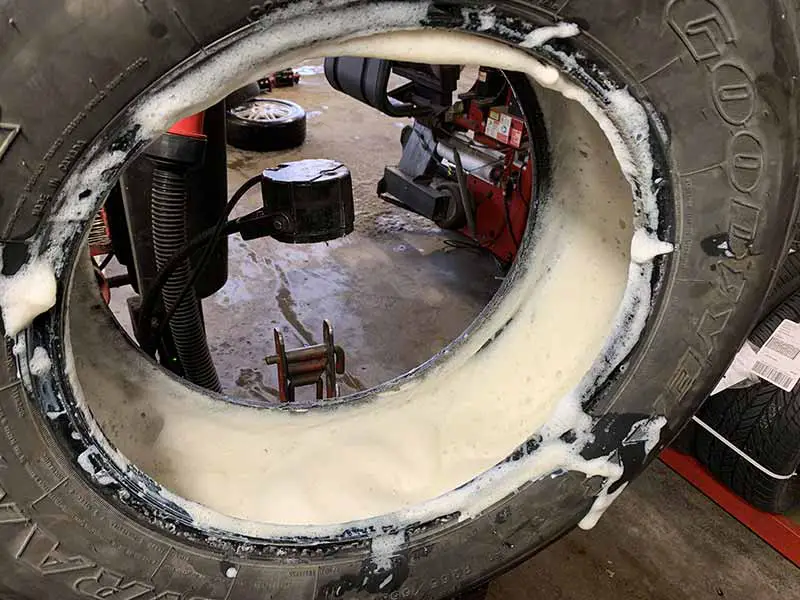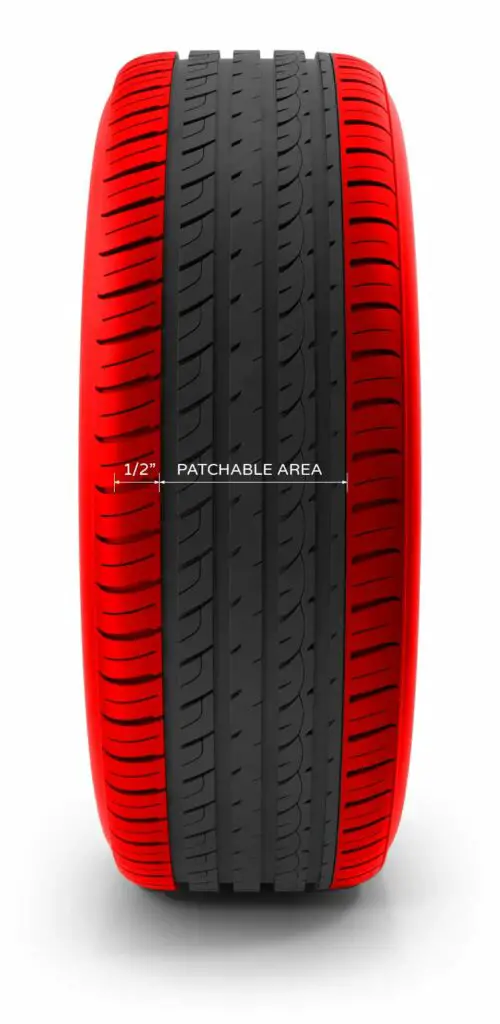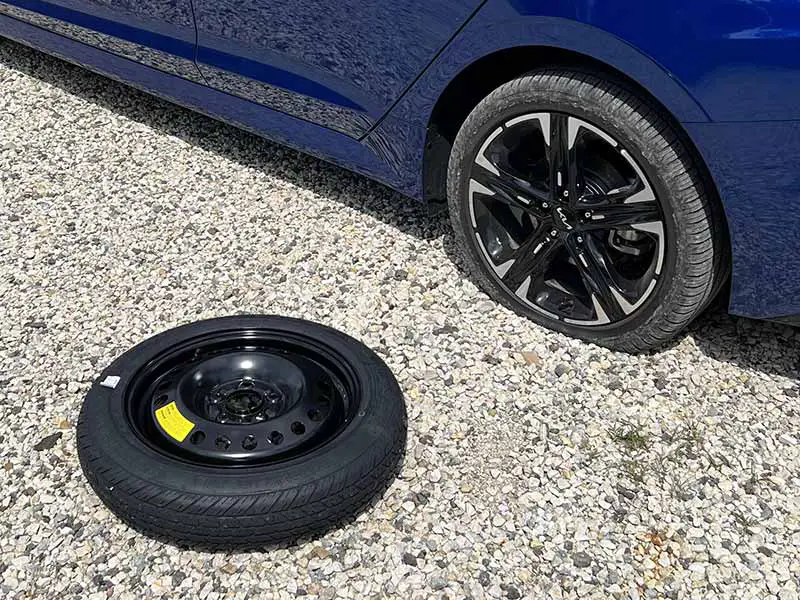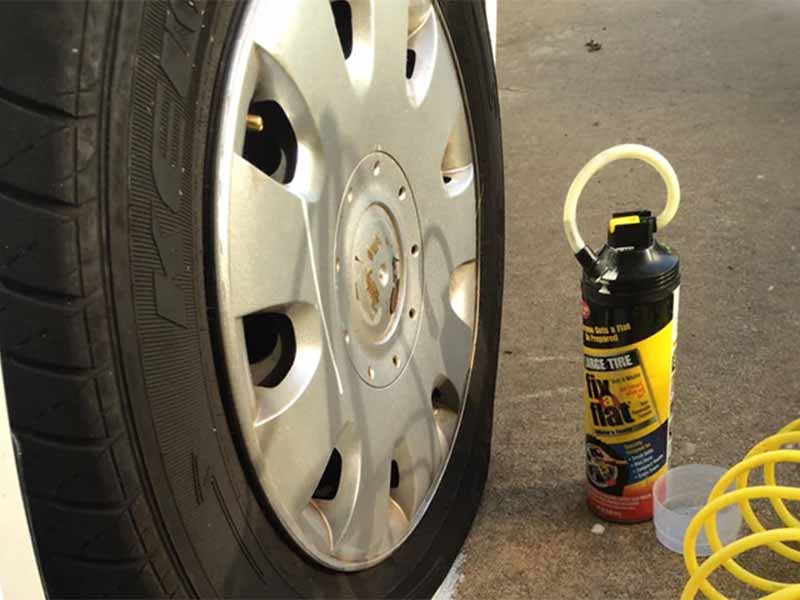Ever found yourself stranded on the side of the road with a flat tire, staring at a can of Fix-A-Flat and wondering if it’s your ticket to freedom or just a temporary band-aid? You’re not alone. Understanding how long Fix-A-Flat lasts in a tire can be the difference between a quick pit stop and a long, costly visit to the tire shop.
How Long Does Fix-A-Flat Last?
Fix-A-Flat lasts anywhere from a few days to a couple of weeks depending on various factors like the size of the puncture and driving conditions. It is designed to only provide a temporary fix for a flat tire.
Fix-A-Flat is not a permanent solution and should be followed by a visit to a professional tire shop for a comprehensive repair.
In this article, we’ll dive deep into the world of Fix-A-Flat, exploring its effectiveness, lifespan, and limitations. We’ll answer commonly asked questions like whether it’s a permanent solution, how to inflate your tire after using it, and what precautions you should take. We’ll also look at alternative solutions for dealing with flat tires.
Let’s take a closer look.

Fix-A-Flat
How Long Does Fix-A-Flat Last?
Fix-A-Flat is designed to be a temporary solution for a flat tire, allowing you enough time to get to a tire shop for a more permanent repair. Generally speaking, Fix-A-Flat can last for a few days to a couple of weeks, depending on various factors like the size of the puncture and your driving conditions.
Factors Affecting the Lifespan
- Size of the Puncture: Smaller punctures tend to be sealed more effectively, extending the lifespan of the Fix-A-Flat repair.
- Driving Conditions: Rough or uneven roads can reduce the effectiveness of the sealant.
- Tire Pressure: Maintaining the correct tire pressure after using Fix-A-Flat can help extend its lifespan.
Addressing Common Questions
How Long for a Slow Leak?
If you’re dealing with a slow leak, Fix-A-Flat can last longer, potentially up to two weeks. However, this is not a guarantee and you should still seek a permanent repair as soon as possible.
Is It a Permanent Solution?
Fix-A-Flat is not intended to be a permanent solution. It’s crucial to visit a tire shop for a comprehensive inspection and repair or replacement of the tire.
Precautions After Using Fix-A-Flat
- Check Tire Pressure: Always check your tire pressure after using Fix-A-Flat to ensure it’s within the recommended range.
- Drive Carefully: Avoid high speeds and rough terrains to prolong the effectiveness of the Fix-A-Flat repair.
- Visit a Tire Shop: Plan a visit to the nearest tire shop for a permanent repair. The longer you wait, the more you risk further damage to the tire.
Monitoring Systems and Fix-A-Flat
If your vehicle is equipped with a Tire Pressure Monitoring System (TPMS), you should be cautious when using Fix-A-Flat. The sealant can sometimes interfere with the sensors, giving you inaccurate readings. Always consult your vehicle’s owner’s manual for guidance.

Is Fix-A-Flat Permanent?
Fix-A-Flat is often seen as a quick and convenient way to deal with a flat tire. However, it’s essential to understand that Fix-A-Flat is not a permanent solution. It’s designed to provide a temporary fix that allows you to drive your vehicle to the nearest tire shop for a more comprehensive repair or even a tire replacement.
Why Isn’t Fix-A-Flat Permanent?
- Limited Sealing Capability: Fix-A-Flat is formulated to seal small punctures in the tire’s tread, not large tears or damage to the sidewall.
- Material Degradation: The sealant in Fix-A-Flat can degrade over time, losing its effectiveness.
- Potential for Uneven Wear: Using Fix-A-Flat can sometimes result in uneven tire wear, which is not ideal for long-term driving.
The Importance of Professional Repair
Why Visit a Tire Shop?
- Expert Inspection: Professionals can assess the overall condition of your tire, not just the punctured area.
- Proper Repair Techniques: Tire shops have the right tools and methods for a permanent repair, such as patching from the inside of the tire.
- Safety: A properly repaired or replaced tire is crucial for safe driving.
Finding the Nearest Tire Shop
- Use GPS or a map app to locate the nearest tire shop.
- Some vehicle insurance plans offer roadside assistance that can guide you to the closest reputable tire shop.
What Happens If You Don’t Seek Permanent Repair?
- Risk of Further Damage: Driving for an extended period on a tire that’s been temporarily fixed with Fix-A-Flat can lead to further damage.
- Potential Safety Hazards: A tire that hasn’t been properly repaired can be a safety risk, affecting your vehicle’s handling and performance.
TPMS and Permanent Repair
If your vehicle has a Tire Pressure Monitoring System (TPMS), it’s even more crucial to get a permanent repair. The sealant from Fix-A-Flat can interfere with the TPMS sensors, leading to inaccurate tire pressure readings.

Craftsman V20 Inflator
Can You Inflate Your Tire After Using Fix-A-Flat?
One common question that arises after using Fix-A-Flat is whether you can or should inflate your tire with air. The short answer is yes, you can inflate your tire after using Fix-A-Flat, but there are some important considerations to keep in mind.
How Fix-A-Flat Affects Tire Pressure
- Initial Inflation: Fix-A-Flat provides an initial boost of air pressure to help you get back on the road.
- Pressure Maintenance: Over time, you may need to add more air to maintain the correct tire pressure.
Steps for Adding Air After Fix-A-Flat
- Check Current Pressure: Use a tire pressure gauge to check the current pressure in the tire.
- Compare to Recommended Pressure: Look up the recommended tire pressure for your vehicle, usually found in the owner’s manual or on a sticker inside the driver’s side door.
- Use an Air Pump: If the tire pressure is below the recommended level, use an air pump to add more air.
Precautions When Inflating
- Avoid Overinflation: Overinflating your tire can cause uneven tire wear and may even risk a blowout.
- Check for Leaks: If you find that you have to inflate the tire frequently, it’s a sign that the Fix-A-Flat seal may not be holding, and you should visit a tire shop.
TPMS Considerations
If your vehicle is equipped with a Tire Pressure Monitoring System (TPMS), be cautious when adding air after using Fix-A-Flat. The sealant can sometimes interfere with the TPMS sensors, leading to inaccurate readings. Always consult your vehicle’s owner’s manual for specific guidance.
When to Visit a Tire Shop
- Persistent Low Pressure: If you notice that the tire pressure keeps dropping, it’s time to visit the nearest tire shop for a permanent repair.
- TPMS Warning: If your TPMS indicates a problem, don’t ignore it. Visit a tire shop for a thorough check.

Reusability of Fix-A-Flat
A common question that many people have is whether a can of Fix-A-Flat can be used more than once. The straightforward answer is no, each can of Fix-A-Flat is designed for a single use. Once you’ve used it to inflate and seal a tire, the can will be empty and should be properly disposed of.
Why Is It Single-Use?
- Pressure Loss: The can loses its internal pressure once used, making it ineffective for a second application.
- Sealant Quantity: The amount of sealant in the can is calculated for one-time use, ensuring that it’s sufficient to seal a puncture and inflate the tire.
How Many Times Can You Fix-A-Flat?
Another related question is how many times you can use Fix-A-Flat on the same tire. While there’s no strict limit, it’s important to consider the following:
- Temporary Nature: Fix-A-Flat is a temporary solution, and repeated use on the same tire is not recommended.
- Potential for Damage: Multiple applications of Fix-A-Flat can lead to uneven tire wear and may even damage the tire’s internal structure.
Precautions for Multiple Uses
If you find yourself in a situation where you’re considering using Fix-A-Flat multiple times on the same tire, keep these precautions in mind:
- Inspect the Tire: Look for visible signs of damage or wear. If the tire looks compromised, it’s time for a replacement.
- Check Tire Pressure: Always maintain the correct tire pressure, especially if you’ve used Fix-A-Flat more than once.
- Visit a Tire Shop: If you’ve used Fix-A-Flat multiple times, it’s crucial to get the tire professionally inspected and repaired or replaced.
TPMS and Repeated Use
If your vehicle has a Tire Pressure Monitoring System (TPMS), repeated use of Fix-A-Flat can cause issues. The sealant may clog or interfere with the TPMS sensors, leading to inaccurate readings.
Disposal of Used Cans
After using a can of Fix-A-Flat, it’s important to dispose of it properly. Many local recycling centers accept empty aerosol cans. Check your local regulations for guidance.

Risks and Precautions
While Fix-A-Flat is a convenient and quick solution for dealing with flat tires, it’s not without its risks. Understanding these risks can help you make an informed decision and take appropriate precautions.
Potential Risks
- Uneven Tire Wear: The sealant in Fix-A-Flat can sometimes cause uneven wear on your tire, affecting its lifespan and your vehicle’s handling.
- TPMS Interference: The sealant can interfere with the Tire Pressure Monitoring System (TPMS) in some vehicles, leading to inaccurate pressure readings.
- Valve Clogging: The sealant can sometimes clog the tire valve, making it difficult to add air in the future.
Precautions to Take
Check the Tire Valve
- Always check the tire valve after using Fix-A-Flat to ensure it’s not clogged.
- If you notice any issues, visit a tire shop for a proper inspection and cleaning.
Monitor Tire Pressure
- Use a tire pressure gauge to regularly check the pressure.
- If you notice any significant drops in pressure, it’s a sign that the Fix-A-Flat seal may not be holding, and you should seek professional repair.
Drive Carefully
- Avoid high speeds and rough terrains after using Fix-A-Flat.
- Such conditions can exacerbate the risks and reduce the effectiveness of the temporary repair.
When to Seek Professional Help
- Persistent Issues: If you notice ongoing issues like dropping tire pressure or uneven wear, it’s time for a professional inspection.
- TPMS Warnings: Don’t ignore any warnings from your Tire Pressure Monitoring System. Visit a tire shop for a thorough check.
TPMS and Risk Mitigation
If your vehicle is equipped with a TPMS, always consult your owner’s manual before and after using Fix-A-Flat. Some manufacturers advise against using tire sealants like Fix-A-Flat as they can interfere with the system.

Alternatives to Fix-A-Flat
While Fix-A-Flat is a popular and convenient option for dealing with flat tires, it’s not the only solution available. Knowing your alternatives can help you make an informed choice, especially in situations where Fix-A-Flat may not be the best fit.
Using a Spare Tire
Advantages
- Permanent Solution: Unlike Fix-A-Flat, a spare tire is a more permanent solution until you can get a new tire.
- No Chemicals: You don’t have to worry about sealants interfering with TPMS or clogging the tire valve.
Steps to Use a Spare
- Locate the Spare: Usually found in the trunk or under the rear of the vehicle.
- Use a Jack: Lift the vehicle using a car jack.
- Remove the Flat Tire: Use a lug wrench to remove the lug nuts and then the flat tire.
- Install the Spare: Put the spare tire on and tighten the lug nuts.
Tire Repair Kits
- Plug Kits: These kits contain rubber plugs that you can insert into the puncture.
- Patch Kits: These are used to patch a hole from the inside of the tire, but require removing the tire from the wheel.
Professional Repair
- Tire Shop: The most reliable option is to get your tire repaired at a professional tire shop.
- Roadside Assistance: Some people opt for roadside assistance services that can either repair the tire on the spot or tow your vehicle to the nearest tire shop.
When to Choose an Alternative
- Large Punctures: Fix-A-Flat is not suitable for large punctures or sidewall damage.
- TPMS Concerns: If your vehicle has a Tire Pressure Monitoring System, using a spare or seeking professional repair may be more advisable.
Finding the Nearest Tire Shop
- Use Technology: GPS and map apps can help you find the nearest tire shop.
- Ask Locals: If you’re in an unfamiliar area, local advice can be invaluable.
Resources
Below are some links you may find helpful when learning about tires
Final Thoughts
Fix-A-Flat is a convenient, quick-fix solution for minor tire punctures, but it’s important to remember that it’s not a permanent fix. Its effectiveness can last from a few days to a couple of weeks, depending on various factors like the size of the puncture and your driving conditions.
While it’s a useful tool in emergency situations, it should always be followed by a visit to a professional tire shop for a thorough inspection and repair. Understanding the limitations and proper usage of Fix-A-Flat can save you time, money, and potentially, a lot of hassle.
Good luck and happy motoring.





